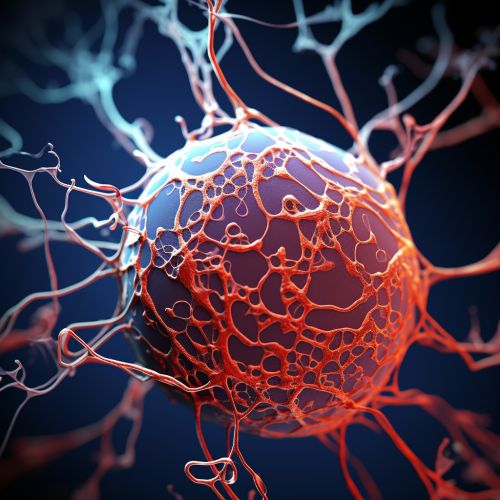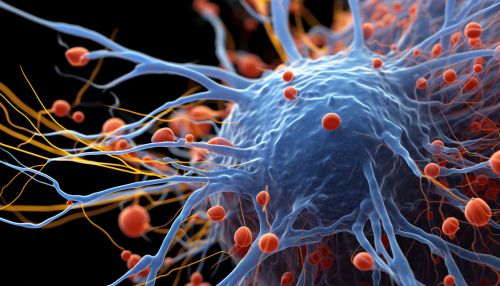Oligodendrocyte
Introduction
Oligodendrocytes are a type of neuroglia found in the central nervous system (CNS). They play a crucial role in the functioning of the nervous system by forming and maintaining the myelin sheath, a fatty layer that insulates neurons and allows for efficient transmission of electrical impulses across the neural network.


Structure and Function
Oligodendrocytes are characterized by their small size and branching structure. They are derived from oligodendrocyte progenitor cells (OPCs), which are present throughout the CNS. These cells differentiate into mature oligodendrocytes under the influence of various growth factors and signalling molecules.
The primary function of oligodendrocytes is to form the myelin sheath around the axons of neurons. This sheath acts as an insulator, increasing the speed at which electrical impulses travel along the axon. This is crucial for the efficient functioning of the nervous system, as it allows for rapid communication between different parts of the body.
Myelination
The process of myelination involves the wrapping of the oligodendrocyte's cell membrane around the axon of a neuron. This forms a multilayered structure known as the myelin sheath. The formation of this sheath is a complex process that involves changes in the biology and cellular metabolism of the oligodendrocyte.
The myelin sheath is not continuous along the length of the axon. Instead, there are gaps known as nodes of Ranvier, where the axon is exposed. These nodes play a crucial role in the conduction of electrical impulses, as they allow for the propagation of these impulses in a manner known as saltatory conduction.
Role in Disease
Oligodendrocytes and the myelin sheath play a crucial role in the functioning of the nervous system, and damage to these structures can lead to a variety of neurological disorders. These include multiple sclerosis (MS), a chronic disease characterized by the loss of myelin in the CNS, and leukodystrophies, a group of rare genetic disorders that affect the growth or maintenance of the myelin sheath.
In addition, oligodendrocytes have been implicated in a variety of other neurological conditions, including schizophrenia, bipolar disorder, and major depressive disorder. Research in these areas is ongoing, and it is hoped that a better understanding of the role of oligodendrocytes in these conditions may lead to new treatments.
Conclusion
Oligodendrocytes are a crucial component of the nervous system, playing a key role in the formation and maintenance of the myelin sheath. Their importance is highlighted by the wide range of neurological disorders that can result from damage to these cells or the myelin they produce. Ongoing research into the biology of oligodendrocytes and their role in disease is likely to yield important insights into the functioning of the nervous system and the development of new treatments for neurological disorders.
